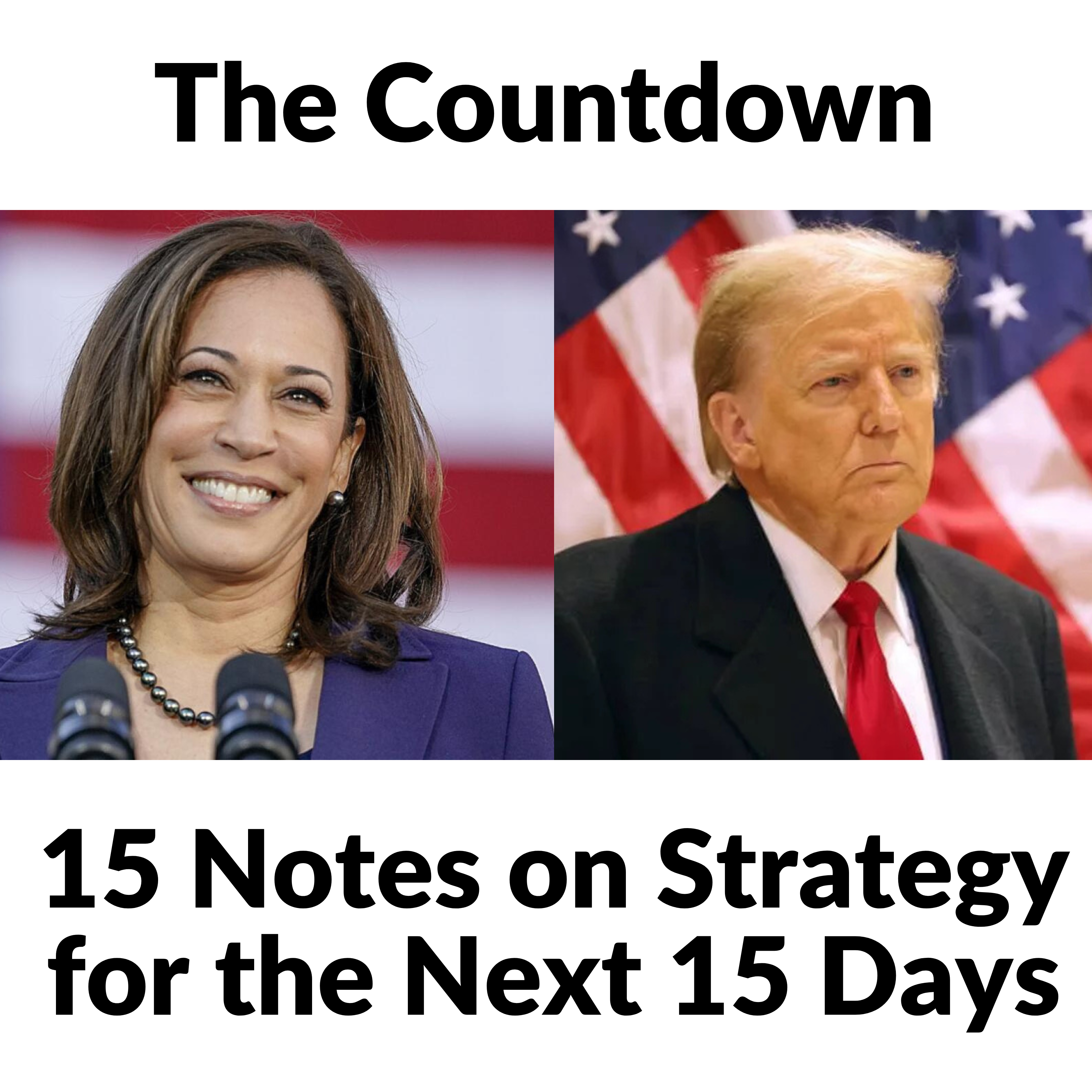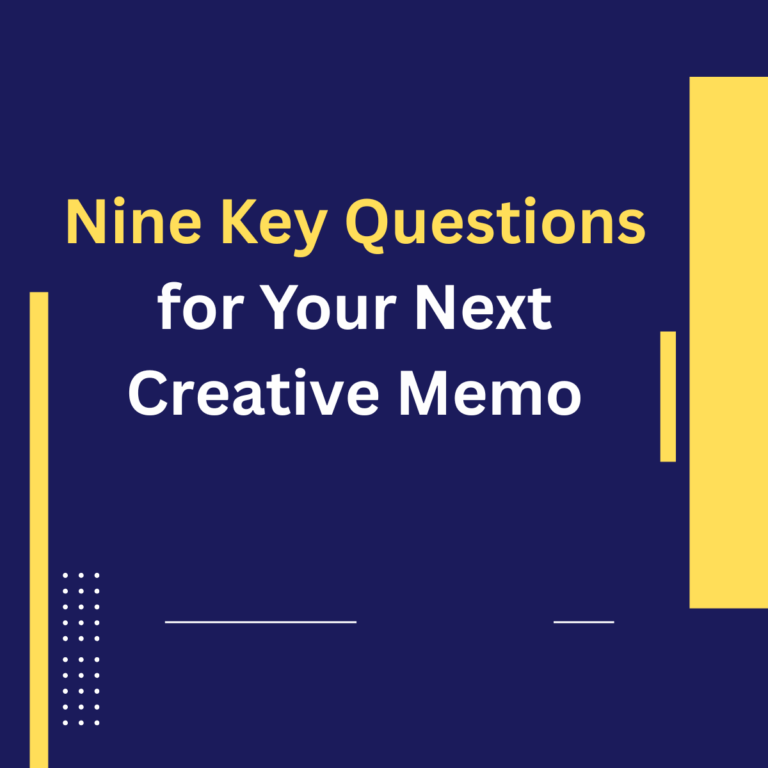
The political debate of the moment is focused on comparing the candidates’ “closing arguments.” More on that in a moment. But first, a reminder that it’s an idea we should take more seriously in our nonprofit messages.
We tend to focus on how we open our messages and get peoples’ attention. But how we end is just as critical. Are you building to an emotional crescendo? Or does your message mumble its way to an uninspiring transactional ask? Does your closing power past your audience’s objections or leave them out there unaddressed?

It’s vital to deliver your closing argument at the right moment. That’s when people are paying attention and before they make their decision. And that’s not always at the very end of your message or campaign.
Year-end giving is a prime example. Locating your strongest “moment of decision” arguments on December 31st isn’t likely to work. On the last day of the year, donors are in a “taking care of business” transactional mode. It’s the days between December 26 and 30 when delivering your closing argument has the most impact – one that will be reflected in your 12/31 responses.

About 70% of the more than 150 million votes cast in the 2020 election were cast before Election Day. And this year on the first day of early voting in Georgia, over 300,000 voters cast their ballots – more than double the 136,000 who voted on the first day of early voting in 2020.
That means candidates can’t wait until the last week of the campaign to put forward their best closing arguments. They need to be doing it now.

The conventional wisdom has been that the race will come down to two questions. First, which candidate can more effectively turn out their base? And second, who can win the pitched battle for the votes of a small, but decisive, group of undecided swing state voters?
Harris is, indeed, focusing on both audiences. But Trump isn’t playing it that way. He is all in on motivating his base and showing almost zero interest in trying to make himself more acceptable to swing voters.
Commentator Charlie Sykes calls it Trump’s “bizarre endgame.” Others have referred to it as “turning up the crazy.” As Sykes notes, “In less insane political moments, candidates try to put forward their best, most attractive selves in the final weeks of a campaign.”
Trump’s plan is a huge strategic gamble and only time will tell if it pays off.

It’s always tricky to distinguish strategic intent from willful self-indulgence in Trump’s actions. Whichever it is, he is clearly doubling and tripling down on his most extreme, autocratic messages including the threat to unleash the US military on his domestic opponents, “the enemy within.”
And in his media appearances, Trump is zeroing in on right-wing media and forgoing the huge audiences available in a second debate or a 60 Minutes interview. That could be a reflection of his “my base is all I need” strategy. But there may be other factors in play.
Sarah Longwell, who has done significant research into this year’s swing voters, makes this observation: “The more people see of Trump, the less they like him, and that has always been true about Donald Trump.”
So rather than maximizing his outreach, limiting his exposure may be Trump’s best path to winning his fair share of swing voters. Of course, there’s also the open question as to whether Trump has lost his ability to do well in media appearances outside of his right-wing cocoon.

It’s not like she’s ignoring her base, but in terms of closing argument audiences, the base isn’t Kamala Harris’ primary focus. She’s counting on three things to drive base turnout. The first is the fact that the audience is already, in Obama language, “fired up and ready to go.”
To drive base turnout, Harris is also relying on surrogates including Obama as well as what may be the largest, most sophisticated grassroots operation ever assembled. These assets are freeing her to focus on another strategic imperative.

Unlike Trump, the Harris campaign is zeroing in on undecided voters. That includes devoting the campaign’s most precious asset – candidate time – to the task. The best way to describe that small, but essential, undecided group is people who are uncomfortable with Trump but unsure about Harris.
It’s not a monolithic group. It includes everyone from young Black men to right-leaning independents to “can I really vote for a Democrat” Trump skeptical Republicans.
Each of these groups requires different closing arguments. And the extent to which the campaign successfully makes those arguments could spell the difference in a number of battleground states.

“Increasingly unstable.” “unfit to serve.” “unhinged.” These are all words that Kamala Harris has used in the last week to describe Donald Trump. She has clearly decided to make the former president’s increasingly erratic behavior a central part of her closing argument.
We’ve come a long way from the joyful tone of her early days of campaigning and are now in a much more contentious period of directly confronting the elephant in the room. It’s going to be interesting to see how Trump responds to the turning of the tables from his relentless assaults on Joe Biden’s mental fitness.

Almost every day, there is more evidence that Trump is, as Harris puts it, increasingly unstable. But – beyond the MSNBC universe – these episodes aren’t drawing nearly as much attention as they would with virtually any other presidential candidate.
It’s one of the many ways that the media has long graded Trump on a curve. But when his opponent raises the issue as directly and clearly as Harris has begun to, it becomes harder and harder for media outlets to ignore.
So, one of the Harris campaign’s closing weeks objectives is not just to raise the issue herself, but to force more media scrutiny of whether and to what extent Trump is in decline.

Even if we win in November, we have to figure out how to connect with Trump voters. Not the hot core of MAGA extremists. I’m talking about the tens of millions more who end up in Trump’s corner because, with considerable justification, they believe our politics and economy have left them behind and ignored. And because they feel unseen and unheard by Democrats and progressives.
It’s not about finding ways to defeat and overwhelm them electorally. Or trying to persuade them that they’re wrong and we’re right. It’s about a concerted effort to genuinely understand and address deeply felt, legitimate worries about their families, their future and their place in a rapidly changing landscape.
We owe it to them. And we owe it to ourselves if we ever want to escape living in a 51% /49% nation. It will be tough. And it will take challenging and upending our own biases and preconceptions. But we’ve got to take it on.

With the polls so close, it’s easy to see the outcome of the election not being clear on Tuesday night or Wednesday morning. And, even if the results are clear and Harris has pulled out a win, 2000 taught us that, in the Trump era, a presidential victory isn’t firmly secured until January 6th.
So political and advocacy groups must be prepared for the joy of a Harris victory being realized not on November 5th but in stages. Our messaging will have to be nimble enough to match that timing.
But, when it does come, the joy of Kamala Harris winning the presidency will be deeply felt. As I have noted elsewhere, a Biden win would have mostly evoked a “phew, that was scary” sigh of relief. But a Harris win will come with far more joy and promise than that.

It seems like we’ve had several “most important of our lifetime” elections in a row. But this one feels like the most legitimate holder of that title. The stakes are high. Peoples’ emotional investment is off the charts. And the fear, anxiety and emotional pain that would accompany a Trump victory will be profoundly felt.
Finding ways to take those heartfelt emotions into account will be a messaging challenge for political and advocacy nonprofits.

In times of severe crisis, people look to the groups they trust to show the way forward, not to simply share their doubts and confusion. The challenge in a nutshell will be finding a way to project confidence while not seeming to discount or dismiss peoples’ deeply felt emotions.

When Trump won the first time, progressive donors and activists quickly rallied to support the groups they counted on to be an effective counterweight. In the event of a Trump victory, the question of the hour will be whether people can muster that kind of response this time around.
My suspicion is that the answer will be yes in the short term, but maybe not over time. I will have much more to say about this if and when we confront a Trump victory. (May it never come to pass.)

One final point on the possibility of a Trump win. We will all be thinking hard about how to support and connect with the profound emotions our donors and supporters are going through.
But nonprofit communicators and organizers can’t ignore their own emotions and their own need for support and sustenance in the face of a truly devastating setback. We will have to invest in self-care and mutual support.









